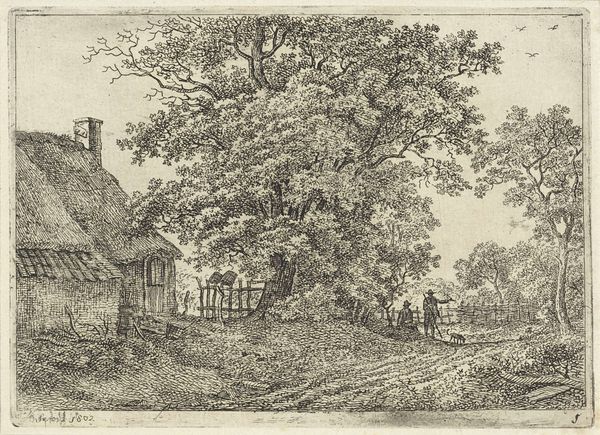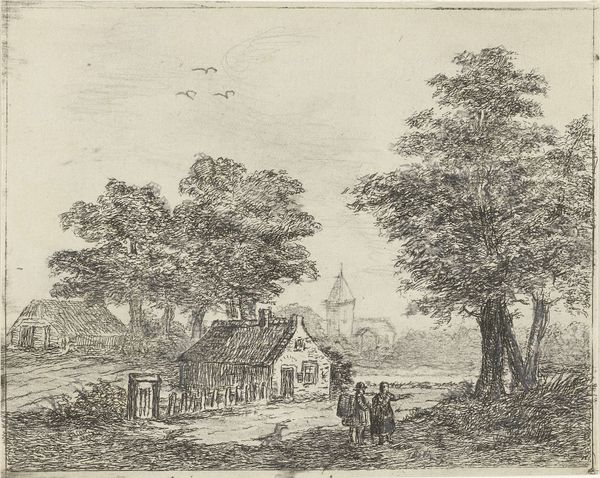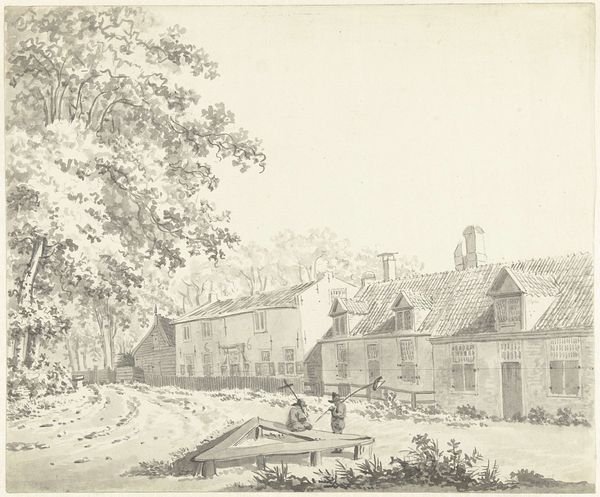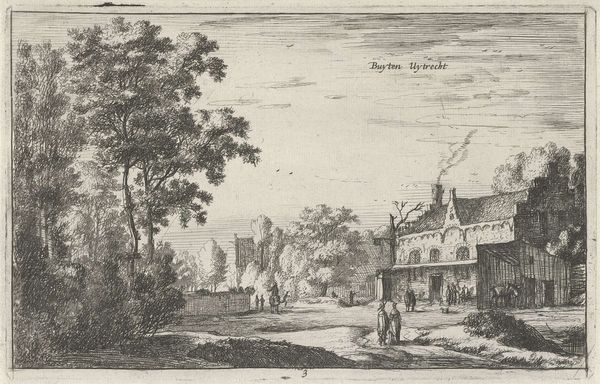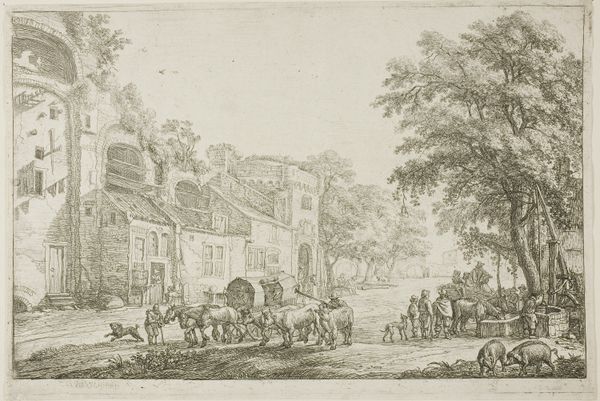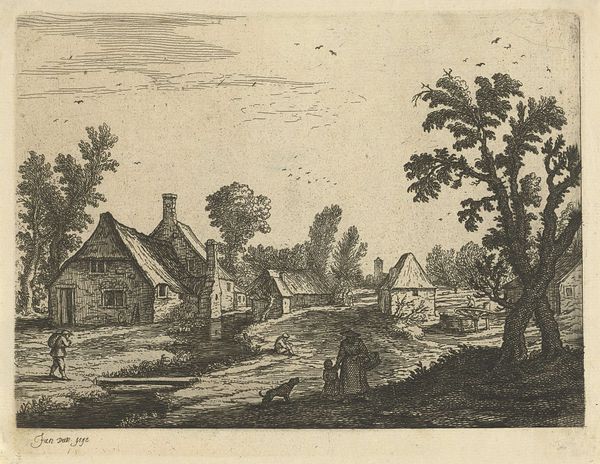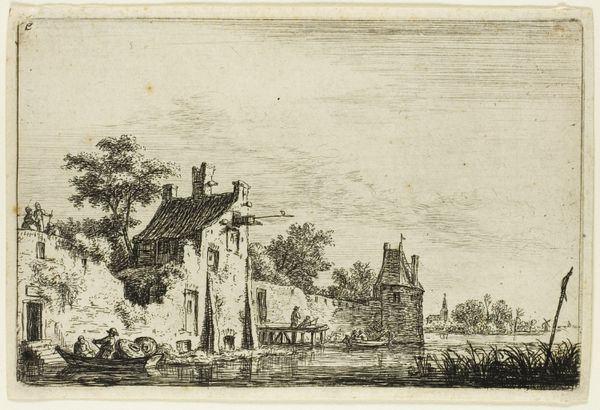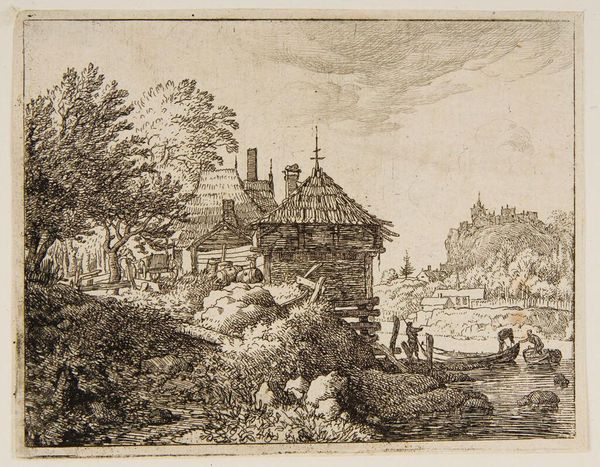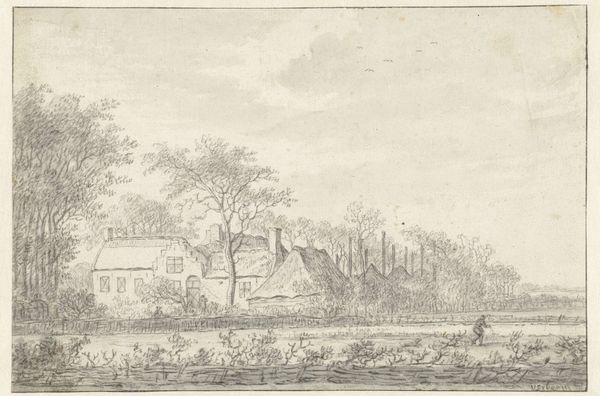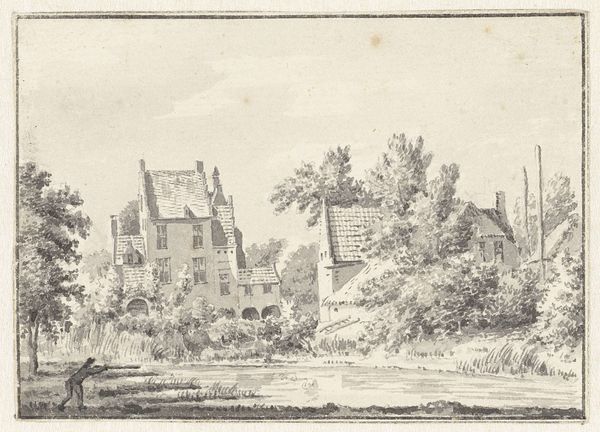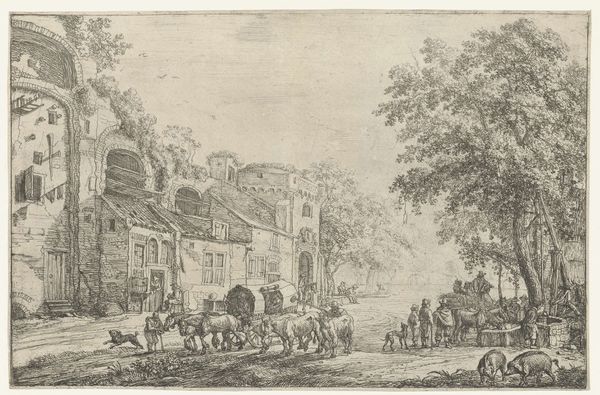
etching, pen
#
dutch-golden-age
#
pen sketch
#
etching
#
pencil sketch
#
landscape
#
line
#
pen
#
realism
Dimensions: height 83 mm, width 169 mm
Copyright: Rijks Museum: Open Domain
Curator: What strikes me first is the quiet industriousness. It's a seemingly simple scene, but incredibly evocative. Editor: Indeed. What you are seeing is an etching, tentatively dated between 1615 and 1652, titled "Boerderij aan een kanaal bij Haarlem," or "Farm on a Canal near Haarlem." It resides here at the Rijksmuseum and is by an anonymous artist. What do you read from the symbolism in this quiet, canal-side setting? Curator: The presence of the watermill signifies transformation and the harnessing of natural power, a very potent symbol in a Dutch context. And look at how light flickers across the water and foliage—it suggests life's constant flux and renewal. Notice the detail in the way that water wheel seems to cut into the landscape; its circularity also signifies the cyclical nature of life. Editor: That's a lovely interpretation, I think, connecting it to a deep psychological landscape. For me, the choice to depict an everyday rural scene also makes a significant historical statement. In this period, Dutch art shifted focus to genre painting, where the common person and local landscapes gained prominence. Curator: Yes, there's an undeniable democratizing aspect here. And note the composition – a balance between the cultivated farmland and wilder nature. It highlights the Dutch struggle to master their environment, reflected, I believe, in this tiny moment. Editor: Absolutely. This balance signifies not just ecological concerns but a deeper negotiation of national identity. Representing this ideal home landscape connects to notions of social harmony, which became essential for political purposes in the early Dutch Republic. Also, it seems more focused on the rural economy, given the farm buildings, workers, and the implied distribution network thanks to the nearby canal. Curator: The line work too contributes so much, and it's exquisite when you look closely! The varying weight creates a kind of trembling energy, emphasizing that this place is very much alive, as if we just walked around the corner. Editor: A crucial factor that highlights the artist’s skill with this complex printing technique! The etching needed precision. Its mass production helped circulate ideas and imagery among an emerging middle class, contributing to cultural shifts in 17th-century Holland. This detailed rural snapshot is a powerful reflection of socio-economic forces shaping an era. Curator: So, while an apparently straightforward scene, “Farm on a Canal near Haarlem” speaks volumes about the symbiosis between place, labor, and perception. I look more closely each time and keep seeing different nuances. Editor: Precisely, revealing the artist's shrewd understanding, while creating cultural perceptions in a transforming era, to promote collective consciousness in society.
Comments
No comments
Be the first to comment and join the conversation on the ultimate creative platform.
